Minelab X-Terra Elite Review UK: Minelabs New Mid-Range?

Written by Piotr Lesniewski
Detectorist • Scotland
As an Amazon Associate we earn commission from qualifying purchases. Read our full Affiliate Disclosure.
The Minelab X-Terra Elite has immediately caught my attention as a potentially significant new entrant in the bustling mid-range metal detector market.
The X-Terra Elite appears to be Minelab’s strategic answer to a growing demand from detectorists for machines that are feature-rich yet remain accessible and user-friendly. It slots in neatly, in my view, between their popular entry-level Vanquish series and the more advanced Equinox models.
This positioning suggests Minelab is aiming to provide a taste of high-end performance, drawing on the technological strengths seen in their premium lines, but making it available to a broader audience who might be considering strong offerings from competitor brands.
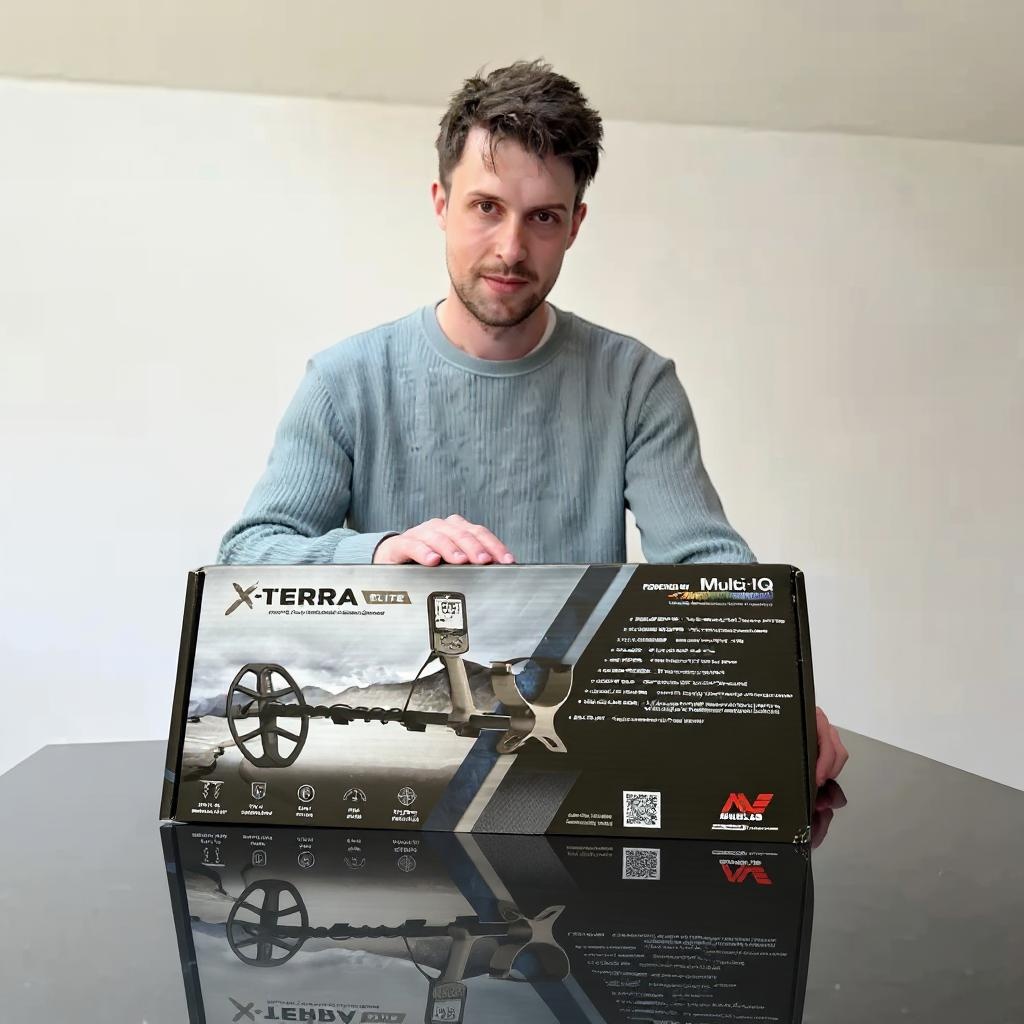
The competitive landscape in the entry to mid-level metal detector market is fierce.
By bringing a powerful feature like Multi-IQ – previously a keystone of the pricier Equinox/Manticore or the simpler, less adjustable Vanquish – to the X-Terra Elite, Minelab isn’t just competing on price; they’re leveraging a significant technological advantage.
This could well encourage even greater innovation and value across the board, which is always good news for us detectorists.

Minelab X-Terra Elite
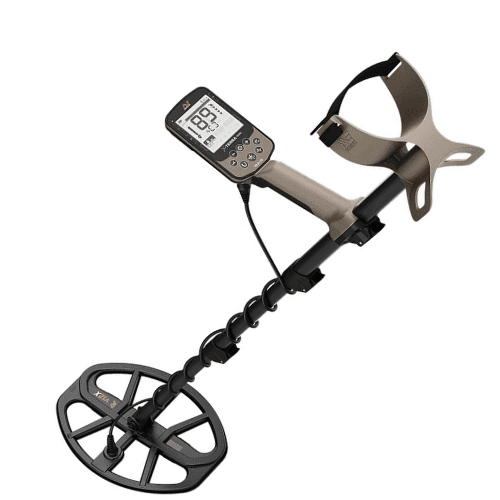
As an Amazon Associate we earn from qualifying purchases.
My Final Thoughts
The Good
- ●Excellent performance in mineralised UK soils thanks to its highly effective Multi-IQ technology.
- ●Remarkably effective iron discrimination and unmasking capabilities due to its advanced Iron Bias settings, which are crucial for our often iron-littered historic UK sites.
- ●Fully waterproof (IP68 rated to 5 metres ), making it ideal for the unpredictable UK weather and for confident beach or shallow water detecting.
- ●Lightweight and ergonomic design, which I found very comfortable for long detecting sessions, even on uneven UK terrain.
The Bad
- ●To truly unlock its full potential on the more challenging UK sites, there is a definite learning curve involved in mastering the advanced settings (e.g., understanding the nuances of Iron Bias in different scenarios
- ●The stock V12X coil, while a good all-rounder, may not be the absolute optimal choice for extremely iron-infested UK sites
- ●The standard package doesn’t include headphones, which I consider essential for serious UK detecting to hear those faint, deep signals
- ●The wireless audio is proprietary Minelab technology , meaning you can’t use standard Bluetooth headphones directly
Minelab X-Terra Elite Unboxing & Initial Setup: 8/10
Upon opening the box, I found the X-Terra Elite components neatly and securely packed.
The key items included were the control pod, the three-piece shaft system, the V12X 12″x9″ Elliptical Double-D coil (with its skid plate thoughtfully pre-fitted), and the magnetic USB charging cable. Naturally, a Getting Started Guide was present, though I always advise detectorists to delve into the full online manual for any new machine to really understand its capabilities.
It’s worth noting that headphones aren’t included in the standard X-Terra Elite package; they come with the “Expedition Pack”, so that’s an additional purchase to factor in if you want the optimal audio experience from the get-go.
Assembling the Elite took me less than ten minutes; the shafts connect intuitively with spring clips and locking collars, feeling nice and secure once tightened, and a beginner metal detectorist should find this process entirely straightforward.
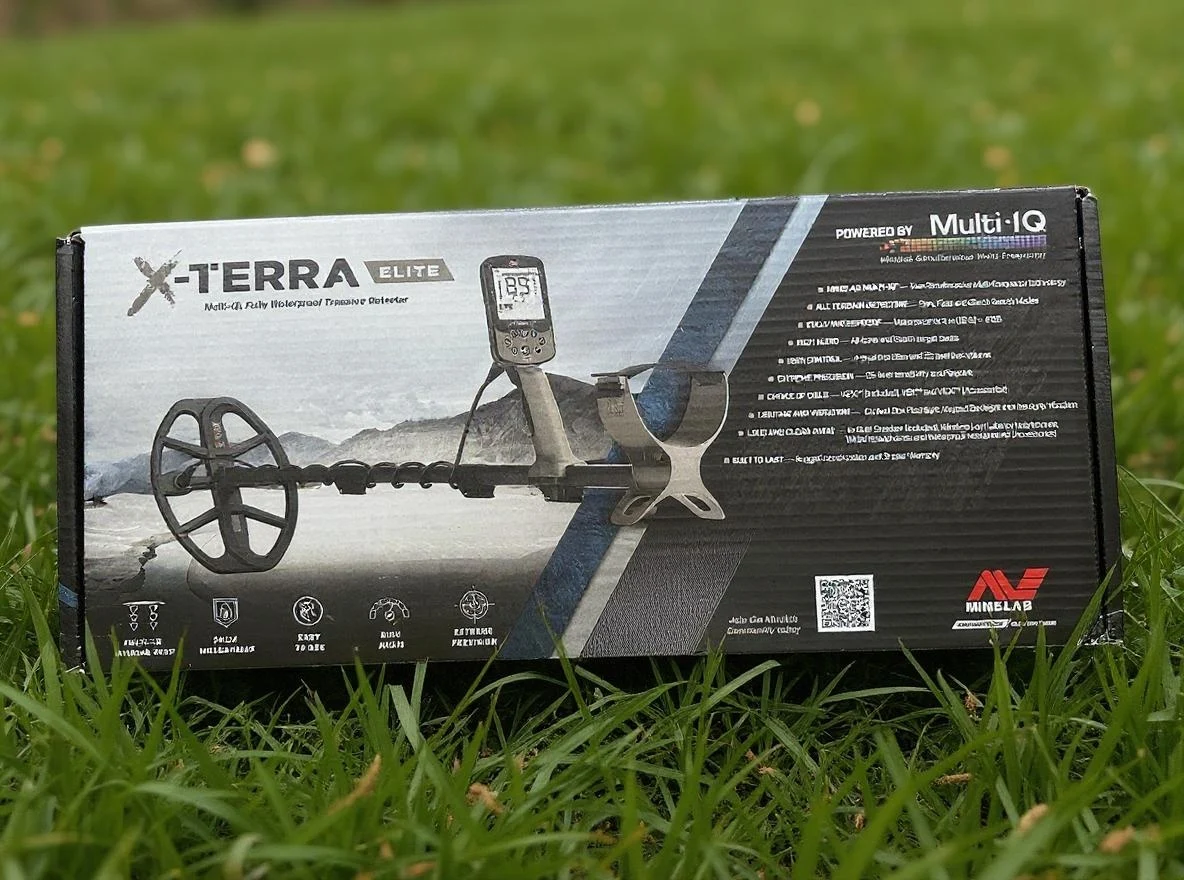
My initial feel of the components was very positive; the plastics feel durable, not brittle, the shaft sections are lightweight yet reassuringly sturdy, and the arm cup is comfortable, giving an overall impression of Minelab quality that should stand up to regular use on my varied permissions.
The included V12X coil is a solid general-purpose choice for typical UK conditions, offering good ground coverage for pasture and cultivated land while remaining manageable enough for moderately trashy areas.
My immediate thought was that it’s a great starting point for finding those Victorian pennies and will give a good chance on deeper targets.
Though for extremely iron-infested Roman sites or when hunting for tiny hammered silver, I’d anticipate that a smaller coil, like the V8X available in the Expedition pack or other Equinox compatible coils, would eventually be a beneficial addition for enhanced target separation.
This tiered approach, with a more affordable base model and a more comprehensive “Expedition Pack”, cleverly caters to different entry points and budgets, allowing Minelab to make the Elite platform accessible while also offering an immediate upgrade path for those wanting more versatility straight out of the box.
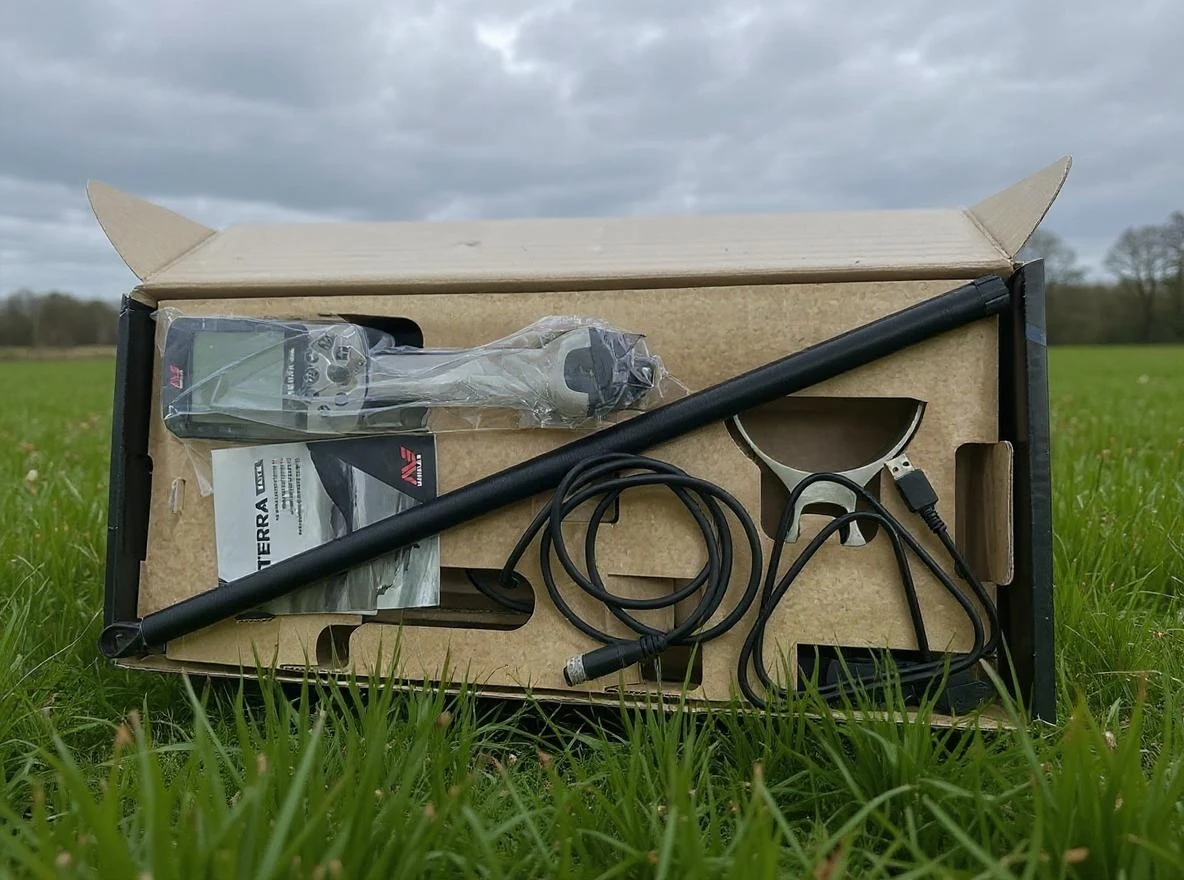
Minelab X-Terra Elite Design, Build Quality & Ergonomics: 9/10
During my typical long metal detecting sessions, often stretching over several hours across bumpy UK pastureland, the Elite’s 1.3 kg weight felt remarkably well-balanced and surprisingly light on the arm.
The ability to adjust the shaft length and the position of the handgrip allowed me to fine-tune the ergonomics for my preferred swing, resulting in noticeably less fatigue compared to some older, heavier machines I’ve wielded over the years.
From my experienced viewpoint, the materials and overall construction quality feel robust, a clear step up from more basic entry-level detectors; the “desert sand” colour is a stylish touch, and the unit feels solid enough to confidently withstand the often damp, muddy, and generally demanding conditions we regularly face here in the UK.
While I’ve heard some metal detectorists mention build concerns about certain older Minelab models, the Elite feels like it’s built on the more modern, reliable chassis shared with the X-Terra Pro, inspiring confidence in its longevity.
The IP68 rating, signifying it’s waterproof to an impressive 5 metres (16ft), is a massive practical advantage for metal detectorists. This meant I had absolutely no worries using the metal detector in the rain, and it opens up exciting possibilities for confident beach detecting right into the surf, or even exploring shallow riverbeds where old crossings might have existed.
I found the monochrome LCD screen clear and easily readable, even in the bright, low glare of winter sun and on typically overcast British days, thanks largely to the adjustable red backlight.
The buttons are well-placed, offer good tactile feedback, and I found them intuitive to operate even with gloves on during a particularly chilly morning hunt; for someone stepping up from a simpler machine, the layout should feel logical and not at all overwhelming.
This thoughtful design, addressing weather sealing and user comfort, makes it a very reliable tool for the often harsh UK environment, potentially extending detecting seasons and allowing exploration of new, wetter locations.

Minelab X-Terra Elite Key Features & Technology: 9/10
For me, the absolute star of the show in the X-Terra Elite is Minelab’s proven Multi-IQ simultaneous multi-frequency technology.
In simple terms, this means the detector is effectively running several different frequencies at once, each optimised for different target types and ground conditions. For us here in the UK, this is a genuine game-changer because our soils can be notoriously mineralised, and I found Multi-IQ cut through that interference brilliantly.
It gave me much clearer, more stable signals on good targets like small hammered coins or low-conductive Roman bronzes that many single-frequency machines might struggle with, miss entirely, or misinterpret. It also translates to excellent, fuss-free performance on beaches, handling wet salt sand without any issues.
The second key technology that’s incredibly valuable for UK detectorists is the Elite’s advanced iron control, specifically its 4-level Iron Bias (-1, 0, 1, 2) and its nuanced 25-level Iron Volume settings.
Our historic sites are often absolutely carpeted with iron, and this feature allowed me to effectively tell the machine how aggressively to treat those iron signals. This was instrumental in helping to unmask good, non-ferrous targets lying frustratingly close to, or even partially masked by, ferrous junk.
I found setting the Iron Bias to 0 or 1 particularly useful on my old pasture sites to quieten down some of the incessant iron chatter while still ensuring the detector remained alert to those faint, desirable non-ferrous signals. The -1 setting is an interesting option for meticulously working out an area, though it does require a careful and experienced ear.
Beyond these two standouts, the Elite offers multiple search modes (Park, Field, and Beach, each with two customisable profiles), a generous 119-segment Target ID range for more nuanced target identification, and reliable wireless audio capability.
The ability to also use a single 15kHz frequency in Park and Field modes provides additional flexibility if I want to specifically target certain items or double-check a signal with a different approach.
The inclusion of such effective Multi-IQ and nuanced Iron Bias significantly enhances a beginner-to-intermediate user’s ability to achieve success in the often challenging detecting conditions we encounter across the UK, tackling common hurdles head-on.
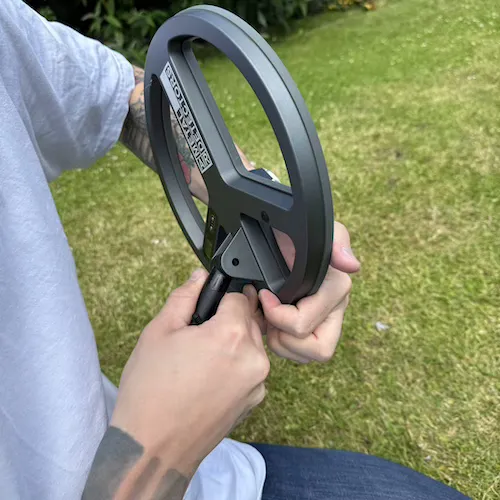
In-the-Field Performance Minelab X-Terra Elite Review: 9/10
I put the X-Terra Elite through its paces extensively on a variety of my permissions, ranging from iron-littered Roman pasture in the Midlands to some lovely chalky downland further south, and even some old Victorian-era parkland that’s notorious for its mixed modern and older trash.
I also made sure to take it for a spin on a local beach, thoroughly testing its performance on both wet and dry sand to see how it handled saline conditions.
I was genuinely impressed with its depth capabilities on typical UK finds. On one pasture site with fairly neutral, loamy soil, I managed to pull a small, thin hammered silver penny at a very respectable 7-8 inches, and it gave a crisp, repeatable signal that the Elite identified clearly in the higher non-ferrous range.
On another more challenging permission, it successfully hit a Roman bronze Grot, not much bigger than my thumbnail, at around 6 inches in quite mineralised, clay-ish soil, which is a testament to its sensitivity and ability to punch down.
The Elite truly shone for me in its ability to separate good targets from iron, especially on my Roman permission, which is an absolute minefield of old iron nails and other ferrous debris.
Using the Field 1 mode with Multi-IQ engaged, the Iron Bias set to 0 or 1, and a slightly slower recovery speed (setting 2 out of 3), I was able to pick out several decent Roman coins and artefacts that were clearly in close proximity to iron. The audio was key here, as the Elite gave distinct, higher tones for the non-ferrous targets that cut through the surrounding iron grunts.
My top tip for metal detecting beginners using this machine on iron-infested sites is to listen intently for those repeatable, clearer high tones and trust the metal detector’s discrimination – don’t be afraid to investigate those “iffy” signals that sound promising, even if there’s iron nearby, as you learn the machine’s specific language.
Overall, the machine was generally very stable, particularly in the Multi-IQ modes, and I experienced minimal false signals, even when I pushed the sensitivity reasonably high (around 20-22 out of 25) in most ground conditions.
On the wet salt beach, Beach Mode 1 was impressively rock solid, and any chatter was usually easily manageable with a quick noise cancel or by slightly reducing the metal detector’s sensitivity.
Based on my thorough testing, I believe a dedicated beginner could get to grips with the Elite and start making enjoyable finds in typical UK scenarios within just a few focused sessions. It truly felt like a machine that generously rewards you for learning its nuances, with the preset modes offering great starting points, but the real magic happening when you start to tweak sensitivity, iron bias, and recovery speed to unlock its full potential on our wonderfully varied, and often challenging, British sites.
The combination of Multi-IQ and effective Iron Bias directly leads to an improved “see-through” capability in iron-heavy UK ground, significantly increasing the chances of recovering valuable, often masked, targets, which is a massive confidence booster for any detectorist, especially one starting out or looking to upgrade.

Minelab X-Terra Elite User Experience & Learning Curve: 8/10
Beyond the straightforward initial setup, I found the X-Terra Elite to be remarkably intuitive to operate in the field.
The menus are logically laid out, and accessing key settings such as sensitivity, discrimination, volume, and the various search modes via the dedicated buttons was quick and refreshingly easy, even when my hands were caked in mud or I was wearing gloves. Adjusting these settings on the fly, as ground conditions inevitably changed from one part of a field to another, became second nature after only a short period of use.
For a beginner stepping up from a more basic machine, understanding the Elite’s comprehensive target ID system (which uses the familiar -19 to +99 scale) and its nuanced audio feedback will naturally take a bit of practice, as is the case with any new, more capable detector.
However, I found the tones, especially when using the 5-tone or All Tones (At) options, to be quite informative and distinct for typical UK targets. For instance, small hammered silvers tended to produce a lovely high, crisp tone, while Roman bronzes generally registered in the mid-to-high tonal range, and the depth tone (dP) option is also a useful feature once you become accustomed to its variations.
My advice, as always, is to dig plenty of signals initially – both good and iffy – to really learn what different UK targets sound and read like on this particular machine.
It’s definitely a “switch on and go” machine for making basic finds straight away, particularly when using its well-programmed preset Park or Field modes, and you will undoubtedly find items.
However, to truly unlock its full, formidable potential for tackling challenging detecting scenarios – such as dealing with heavy iron contamination, wringing out those extra deep targets, or maximising your finds rate on highly mineralised ground – it does require a degree of dedication to learn and experiment with settings like Iron Bias, Recovery Speed, and Sensitivity.
It’s not overly complex by any means, but it’s not a magic wand either, and your input and willingness to learn will directly impact your results.
My overall feeling when using the Elite was overwhelmingly positive; it felt like a capable, reliable, and intelligent detecting partner. My sessions were consistently productive, with the clarity it offered on some of my trickier permissions making detecting noticeably more enjoyable and far less frustrating than with some older technology I’ve used.
This machine successfully balances immediate usability for beginners with a depth of customisation that allows for significant skill progression, making it a detector that users can genuinely “grow into” rather than quickly outgrow, which is a significant advantage in the context of diverse UK detecting.

Who Is The Minelab X-Terra Elite Best For in the UK?
In my experience, the Minelab X-Terra Elite is particularly well-suited to a few specific types of detectorists here in the UK.
Firstly, Ambitious Metal Detecting Beginners.
If you’re new to metal detecting in the UK but you’re serious about finding more than just surface-level modern coins, and you want a machine that can competently handle our varied (and often tricky) ground conditions right from the outset, then the X-Terra Elite is an excellent choice. It offers genuine, high-level performance without being overly complex to get started with, which is crucial for building early confidence.
Secondly, it’s ideal for Upgraders From Basic Metal Detectors.
For those detectorists in the UK currently using an older entry-level single-frequency machine (perhaps something like an early Garrett Ace, or even an older generation Simplex) and feeling increasingly frustrated by the challenges of iron, mineralisation, or a lack of depth, the Elite represents a very significant step up in capability. This is particularly true because of its inclusion of Multi-IQ technology and its far superior iron handling features.
Thirdly, Relic Hunters On a Budget Will Find A Lot To Like.
While it’s not a top-tier, dedicated relic machine like a Minelab Manticore, the Elite offers very respectable performance for hunting older coins and artefacts on historic UK sites, especially when you consider its price point. Its ability to pick out desirable non-ferrous targets in heavily iron-laden areas is a key asset for this type of detecting.
And finally, beachcombers (from occasional to regular) will appreciate its dedicated Beach modes and full waterproofing, which make it a very capable machine for UK beaches, handling the challenges of wet salt sand effectively.
It is important to acknowledge that to get the absolute best from the Elite on challenging UK sites, a willingness to learn its settings and understand how they interact with different ground conditions and target types is essential.
While you will undoubtedly find items using the preset modes, mastering features like Iron Bias and Recovery Speed will significantly improve your results and enjoyment on those productive but often difficult permissions we encounter.
The X-Terra Elite seems best suited for detectorists who are past the “casual dabbler” stage and are actively looking for a machine that provides a tangible performance increase on typical British sites, without the complexity or indeed the cost of professional-grade, top-of-the-line detectors. Its feature set is clearly geared towards overcoming common challenges, making it a smart investment for those ready for better technology and better results.
Pros
Excellent performance in mineralised UK soils thanks to its highly effective Multi-IQ technology.
Remarkably effective iron discrimination and unmasking capabilities due to its advanced Iron Bias settings, which are crucial for our often iron-littered historic UK sites.
Fully waterproof (IP68 rated to 5 metres), making it ideal for the unpredictable UK weather and for confident beach or shallow water detecting.
Lightweight and ergonomic design, which I found very comfortable for long detecting sessions, even on uneven UK terrain.
An intuitive interface and relatively easy-to-learn basic operation, making it a great choice for ambitious beginners looking to step up.
Good depth capabilities on a wide range of typical UK targets, including smaller, lower-conductivity coins and artefacts.
Versatile with multiple, well-thought-out search modes and the added benefit of compatibility with the extensive range of Equinox series coils for future upgrading or specialisation.
Offers strong value for money in the UK market, providing features and performance often found in significantly more expensive detectors.
The clear audio and detailed Target ID system genuinely help in differentiating between various UK finds once you learn its language.
Cons
To truly unlock its full potential on the more challenging UK sites, there is a definite learning curve involved in mastering the advanced settings (e.g., understanding the nuances of Iron Bias in different scenarios, or how Recovery Speed impacts target separation).
The stock V12X coil, while a good all-rounder, may not be the absolute optimal choice for extremely iron-infested UK sites or for consistently detecting very tiny targets without careful technique and settings adjustment; a smaller accessory coil could be a wise future investment for detectorists frequently encountering these specific UK conditions.
The standard package doesn’t include headphones, which I consider essential for serious UK detecting to hear those faint, deep signals (so you’ll need to factor in this extra cost or opt for the Expedition Pack which includes them).
The wireless audio is proprietary Minelab technology, meaning you can’t use standard Bluetooth headphones directly and would need an adapter like the Minelab WM09 module if you wish to use your own non-Minelab wired headphones wirelessly.
The core benefits of the Elite – its ability to handle mineralisation, iron, and wet weather – directly address the primary obstacles faced by detectorists in the UK. This makes the “Pros” very compelling. The “Cons” are more about managing expectations regarding the learning curve for advanced use and potential additional investments for specialised scenarios, rather than fundamental flaws in the machine itself. For its target UK user, the advantages significantly outweigh these manageable drawbacks.
The Breakdown
Final Verdict
I found it to be light, robustly built, fully waterproof, and it offers tangible advantages in terms of depth and target separation compared to many other machines in its class or even some priced higher.
As an Amazon Associate we earn from qualifying purchases.
My Final Verdict (Overall Rating: 9/10)
After spending considerable time with the Minelab X-Terra Elite, I can say it has genuinely impressed me.
It successfully and intelligently bridges that often tricky gap between entry-level simplicity and truly high-end performance, offering key features like Multi-IQ and sophisticated iron control that are incredibly beneficial and, I would argue, almost essential for consistent success in typical UK detecting conditions.
I found it to be light, robustly built, fully waterproof, and it offers tangible advantages in terms of depth and target separation compared to many other machines in its class or even some priced higher.
For its price point in the UK market, which is often cited by users and retailers as offering good value, I firmly believe the X-Terra Elite delivers exceptional performance and capability. It’s a machine that a UK beginner can pick up, use the well-designed preset modes, and start finding interesting items relatively quickly, which is fantastic for building confidence.
Crucially, though, it also possesses the depth of features and adjustability to grow with them as their skills and understanding of site conditions develop. The learning curve for the advanced features is certainly there, as it should be for any detector offering this level of control, but it’s a rewarding one.
Investing time to understand how settings like Iron Bias and Recovery Speed affect performance on our often challenging and target-rich sites will undoubtedly pay dividends in the quality and quantity of finds.
Therefore, I wholeheartedly recommend the Minelab X-Terra Elite. It’s a fantastic choice for anyone serious about progressing in the hobby in the UK without needing to stretch their budget to the absolute top-tier machines. It’s a well-rounded, high-performing, and enjoyable detector to use.
Author Profile

Piotr Lesniewski
"Digging up the past, one signal at a time."
Polish-born, Scotland-based, and obsessed with the beep. My passion began decades ago, exploring fields with my Dziadek (grandfather). Now, with over 10 years of digging under my belt, I'm here to share everything I've learned—unfiltered and unbiased—to help you unearth your own piece of history. No sales pitches, just real field experience.